Why you should explore Jordan through its food
As the old Jordanian saying goes: ‘Even when you’re full, you can still always eat 40 more bites of food’
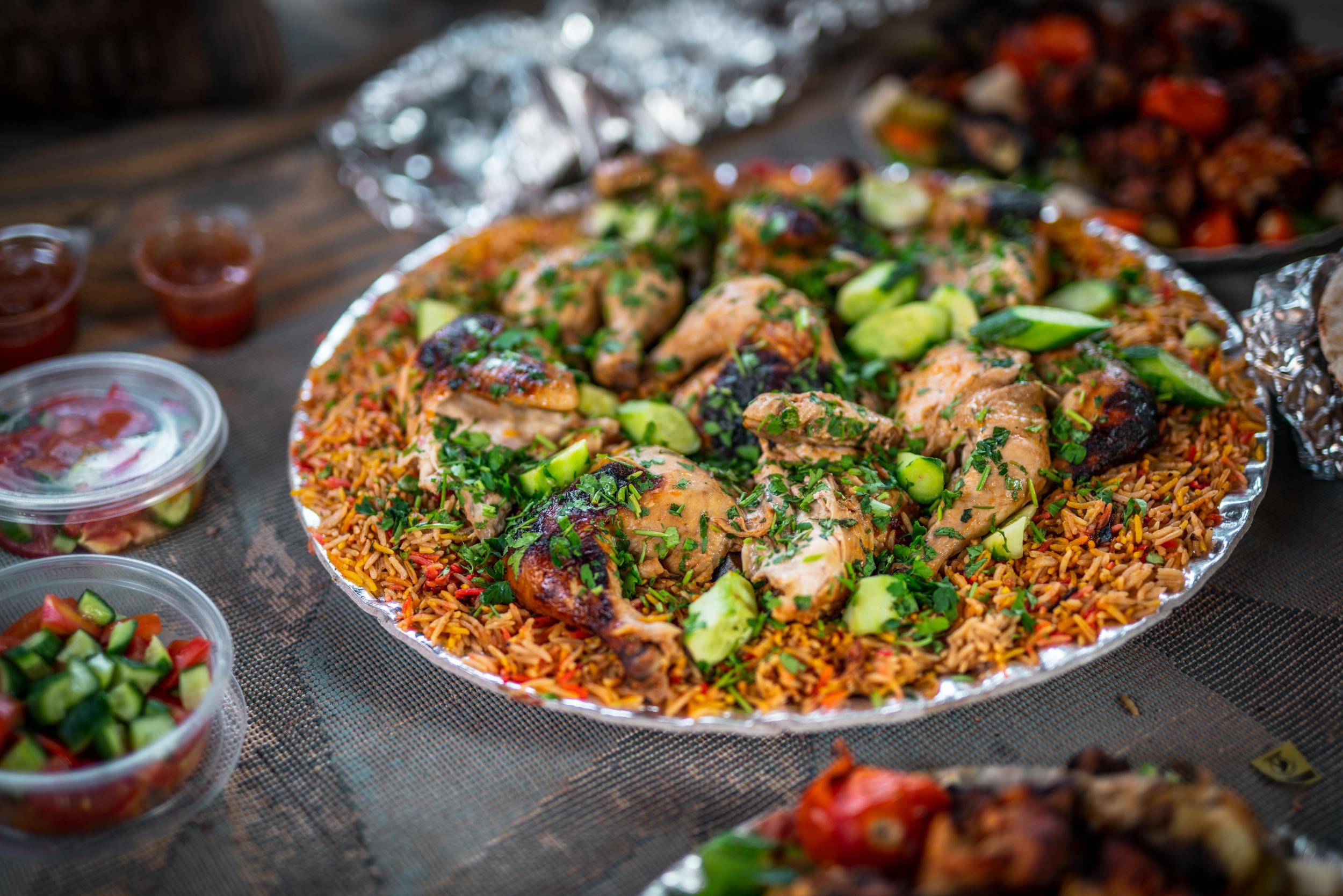
Your support helps us to tell the story
This election is still a dead heat, according to most polls. In a fight with such wafer-thin margins, we need reporters on the ground talking to the people Trump and Harris are courting. Your support allows us to keep sending journalists to the story.
The Independent is trusted by 27 million Americans from across the entire political spectrum every month. Unlike many other quality news outlets, we choose not to lock you out of our reporting and analysis with paywalls. But quality journalism must still be paid for.
Help us keep bring these critical stories to light. Your support makes all the difference.
Our table at Hashem in downtown Amman was laden with simple and delicious mezze. We ripped off hunks of khubz, the ubiquitous flatbread, to dip into hummus and ful mudammas, a Middle Eastern dish of stewed fava beans. We tucked into stuffed falafel, its fluffy centre wrapped in a crispy, sesame-crusted shell.
Down the road at Habibah, the queue snaked around the block for the calorie-laden sweet treat kanafeh. We joined locals eating this salty cheese pastry, drenched in sugar syrup and sprinkled with crushed pistachios, as our guide Mohammed recited the Jordanian proverb: “Even when you’re full, you can still always eat 40 more bites of food.”
I was discovering that Jordan is a mesh of cultures with a cuisine to match, its eating habits shaped by invaders and neighbours, alongside the Bedouins. And on Intrepid’s new food-focussed tour, I was getting a new take on its dramatic landscapes and legendary monuments.
Driving across the stark and beautiful Wadi Rum, we stopped to scramble up sand dunes and marvel at ancient Nabataean graffiti, arriving at our simple tented camp in time to watch the setting sun paint the sandstone mountains gold, red and purple, while our dinner cooked underground.
The desert is still the domain of the Bedouin and their doe-eyed camels, and the method of cooking what is known as zarb has barely changed for centuries. In this Bedouin barbecue, a metal drum filled with glowing embers is lowered into a hole in the sand, followed by a two-tier tray heaped with meat and vegetables. Covered and left to slow cook for hours, it emerged in a cloud of steam with goat meat that melted off the bone.
Afterwards, we sat by the campfire under the arch of the Milky Way drinking cups of Bedouin “whisky” – tea blended with sage, cardamom and wild mint – while our hosts picked out the constellations.
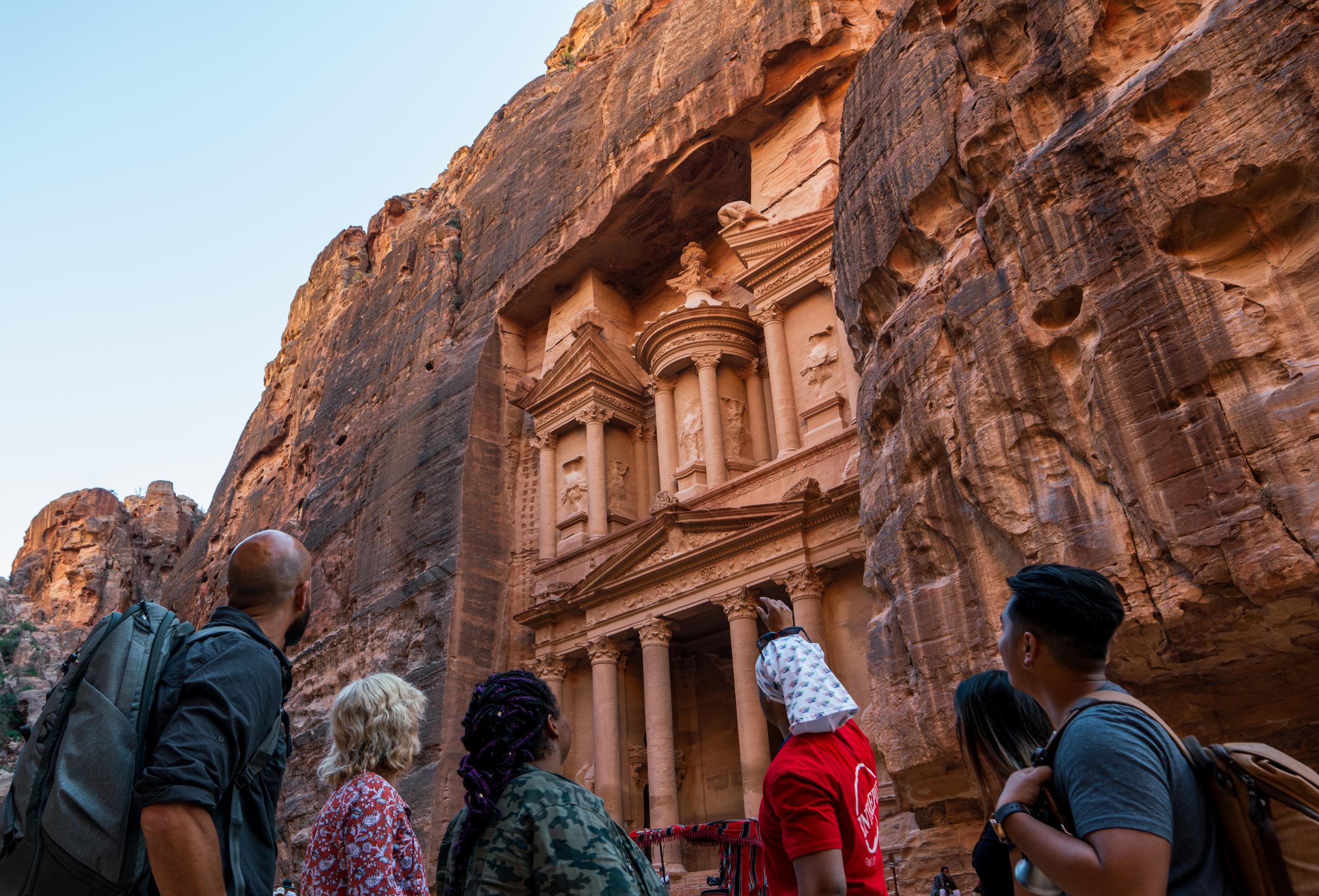
Petra is the country’s greatest treasure and the Bedouin still consider the once-thriving Nabataean trading city their home.
There was a collective gasp of amazement as the rose-hued Treasury, carved into a sandstone rock face, appeared through the Siq entrance’s narrow opening – but away from the crowds we followed Mohammed up the 600 or so stairs to the High Place of Sacrifice and, stunned by the sheer scale of the prehistoric site, looked down on people milling around its magnificent rock tombs.
Having notched up around 30,000 steps exploring Petra, that evening we left our shoes at the door as the affable Amnah welcomed us into her living room to sit Bedouin-style on the floor.
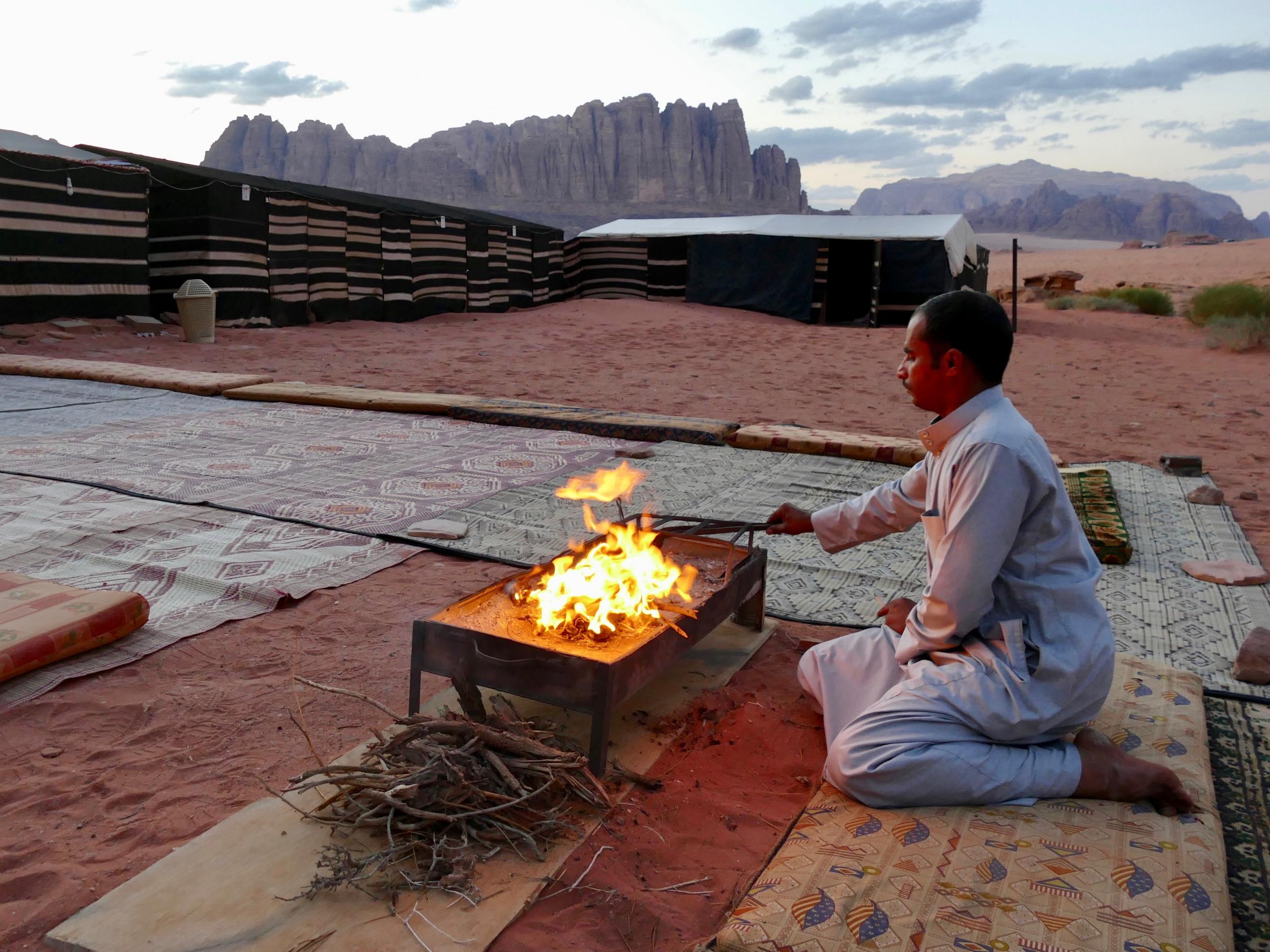
Mansaf was on the menu, the country’s most popular dish that’s brought out at every celebration. With strong Bedouin roots, it’s a rich mix of lamb cooked in jameed – dried balls of fermented goat’s milk yoghurt – spread over a bed of rice and paper-thin sharak bread that takes hours to prepare.
Sitting around enormous communal platters, we were encouraged to eat with our right hands. Mohammed showed the less nimble-fingered how to use the rice to mop up the sauce, deftly rolling it with meat in to a small ball before popping it into his mouth.
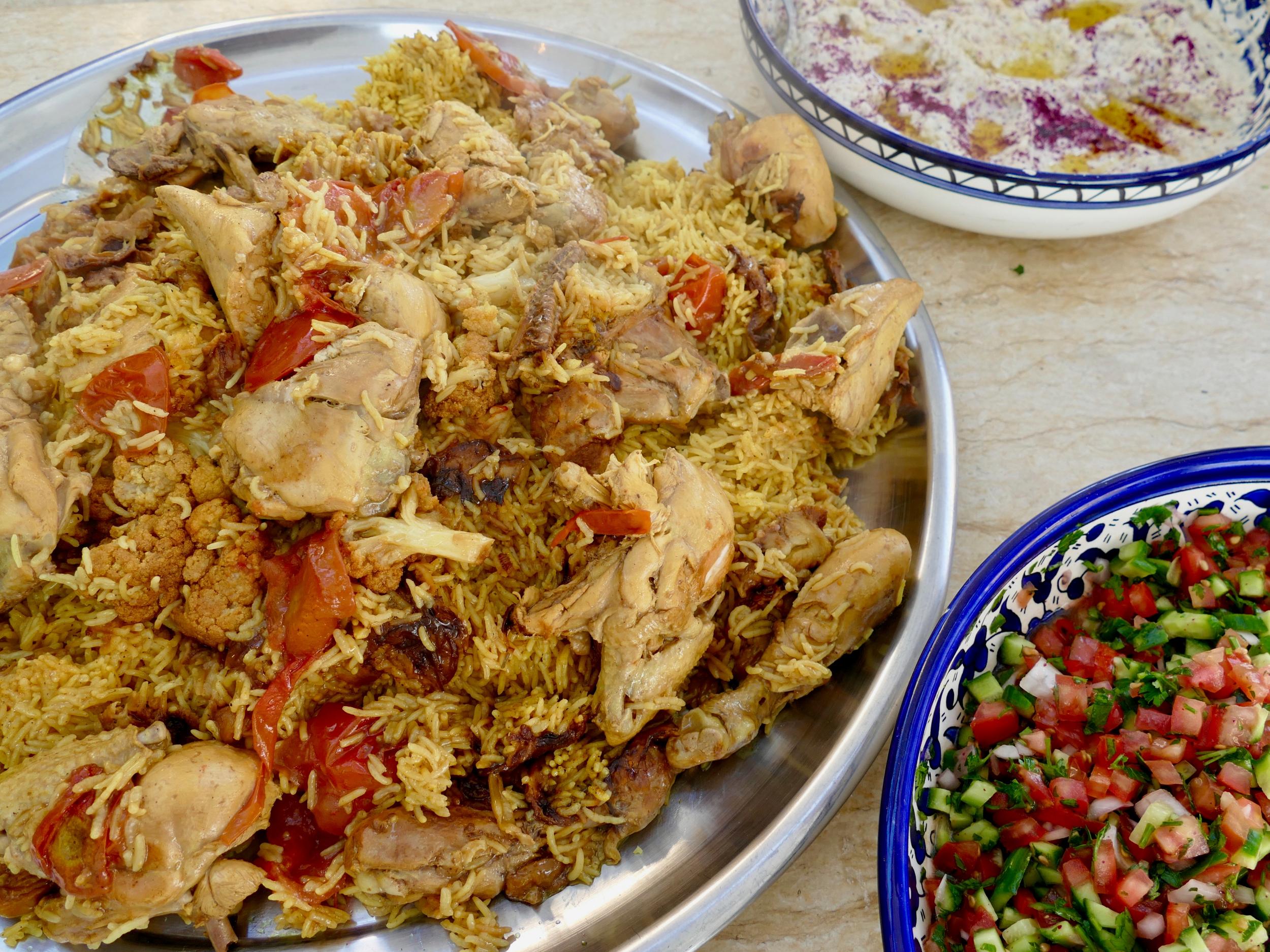
The skull sat in the middle. “If there’s no head, then your guests are not invited from the heart,” explained Amnah. “And if guests touch the head, they’re implying that we haven’t served enough food.”
Back in Amman, Beit Sitti – “my grandmother’s house” – is a hands-on cooking school and social project rolled into one. It was started eight years ago by three sisters who wanted to keep their grandmother’s house and memory alive – the house is filled with her family photos, copper pots and plates – and today creates employment for local women.
During the class, there was no talk of measurements; instead Jude Mseis enthusiastically ordered us to get our hands dirty, to feel the texture of the pitta dough that her assistant Umbayan was turning over like a machine.
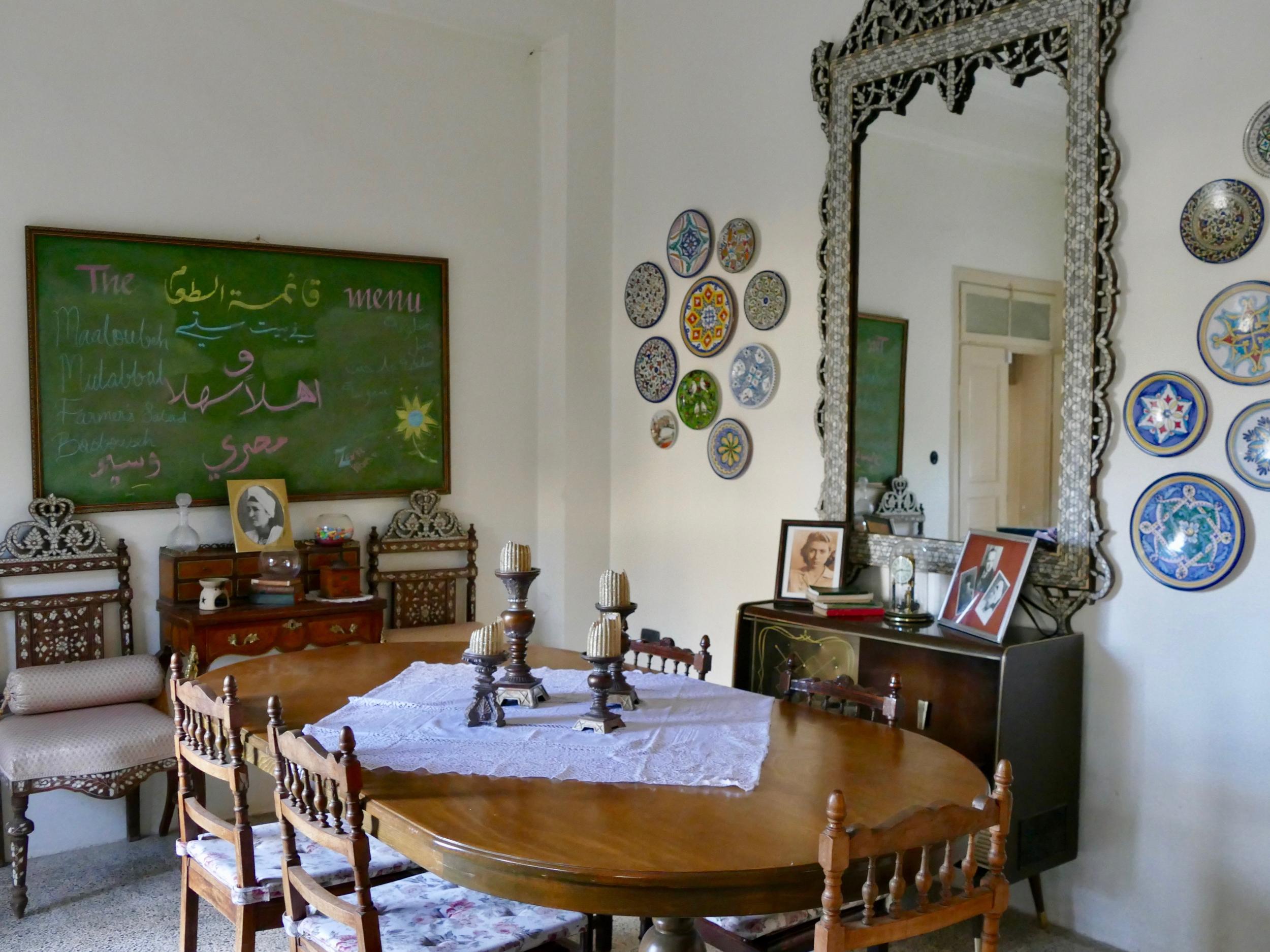
We learnt how to rustle up mouttabal, a smooth and smoky aubergine dip and maqluba, “upside down” in Arabic. We started by putting the “sacrificial tomatoes” on the bottom of a giant metal pot, followed by chicken “pretty side down”, lightly fried cauliflower and aubergine, topped by rice boiled in such an aromatic mix of spices that even the chef in our group couldn’t guess them all.
When it was ready, someone offered to flip the giant pot onto a platter but for an instant it slipped out of his grasp and everyone gasped. But biceps bulging, he righted it and our layered masterpiece was revealed.
To a soundtrack of the call to prayer, we sat down to enjoy the feast of Jordanian flavours we’d created. “Betti bettak, my house is your house,” said Jude, which summed up the trip perfectly.
Where to eat
Sufra Restaurant, Amman (Jordanian fine dining)
Izhiman Coffee, Amman (coffee and spices)
The Family Cafe, Amman
Souk el-Khodra food market, Amman
Al Quds Falafel, 41 Rainbow Street, Amman (falafel)
My Mom's Recipe Restaurant, Petra
Travel essentials
Visiting there
The author travelled with Intrepid Travel on its six-day Jordan Real Food Adventure, which costs from £970 per person, including hotel and desert camp accommodation, transfers, daily breakfast and most meals and activities in Amman, the Dead Sea, Petra and Wadi Rum. Flights excluded. The next available departure is 31 October.
Getting there
British Airways flies five times a week from Heathrow to Amman, from £488 return, including taxes.
Join our commenting forum
Join thought-provoking conversations, follow other Independent readers and see their replies
Comments